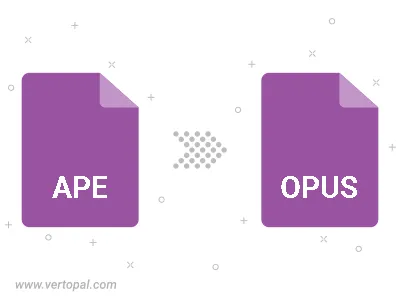Convert APE to OPUS
Convert APE audios to OPUS format, edit and optimize audios online and free.

The APE file extension, associated with Monkey's Audio, represents a lossless audio compression format designed to preserve original sound quality while reducing file size. Developed by Matthew T. Ashland in 2000, Monkey's Audio employs advanced algorithms to achieve efficient compression without data loss, making it a preferred choice for audiophiles and digital archiving. APE files support metadata tagging and are widely used in music production, storage, and distribution. While offering superior compression ratios compared to other lossless formats, they require specific software or plugins for playback due to limited native support across mainstream media players.
Opus, associated with Opus Audio, is an open, royalty-free audio codec designed for high-quality voice and music streaming. Introduced by the Internet Engineering Task Force (IETF) in 2012, it adapts seamlessly to various applications like VoIP, videoconferencing, in-game chat, and live music performances. Known for its versatility, low latency, and high compression efficiency, Opus is widely adopted in modern communication platforms and web applications, making it a cornerstone in contemporary audio technology.
Drag & drop any APE file from your device or click the Choose File button to proceed.
Before clicking the Convert button, use any available APE to OPUS tools.
You will be redirected to the download page to see the conversion status and download your OPUS file.

Trim & cut APE and convert it to OPUS.
Convert APE to OPUS and set the output channels to Mono (1.0) or Stereo (2.0).
To change APE format to OPUS, upload your APE file to proceed to the preview page. Use any available tools if you want to edit and manipulate your APE file. Click on the convert button and wait for the convert to complete. Download the converted OPUS file afterward.
Follow steps below if you have installed Vertopal CLI on your macOS system.
cd to APE file location or include path to your input file.Follow steps below if you have installed Vertopal CLI on your Windows system.
cd to APE file location or include path to your input file.Follow steps below if you have installed Vertopal CLI on your Linux system.
cd to APE file location or include path to your input file.